Home to the Atlas and the Rif Mountains, Morocco is a charming and mountainous country that is worth a visit. On a clear day, it is visible from the Spanish coast. Peaking at about 4.16 kilometres, the Atlas Mountains are Morocco's highest point.
Here are a few must-know facts about Morocco:
According to the latest statistical estimates by the United Nations, Morocco's current population sits at 36,433,265. Casablanca is the largest city in Morocco with about 4 million inhabitants, and Rabat is the capital city. Moroccan natives are called Berbers or Amazighs.
Currency: Moroccan dirham
Capital: Rabat
Official languages: Moroccan Arabic, Berber, Hassaniya Arabic
French and Spanish are commonly spoken in Morocco. In the larger cities, you will also meet many people who can speak English.
The dirham, Morocco's currency, is not easily available outside of the country, so you will most likely need to wait until you are there to exchange your money. There are currency exchange bureaus at the airport and many banks in major cities where you can obtain the local currency.
In contrast to other Muslim countries, in Morocco, you will not be allowed to enter a mosque unless you are Muslim.
In North Africa, living in a capital city means appreciating an assortment of modernism and cultural authenticity. An hour's drive from Casablanca is the capital of Morocco, Rabat.
The climate in Rabat is warm and pleasant. Rain falls mostly in winter, with little rain in summer. The best time to visit is at the beginning of summer if you are looking for a relaxed and tranquil destination.
The Rabati have a flair for welcoming visitors. Although the city looks more administrative and political, there are many places to visit inside and outside of it. Many major roads intersect here, making it a convenient location that can be easily reached by most types of transportation.
The Royal Palace, where the Moroccan Royal family lives, is in Rabat. It is a great place to take pictures and to see some famous Moroccan architecture, although tourists are not allowed inside the palace.
Whether you prefer strolling through traditional stores or shopping in large, modern malls, you will be pleased to know there are plenty of both.
Moroccan and Western dishes are everywhere. The Rabati cuisine includes rich and varied dishes, such as Berber couscous, tajine with olives, and other dishes incorporating argan and olive oil.
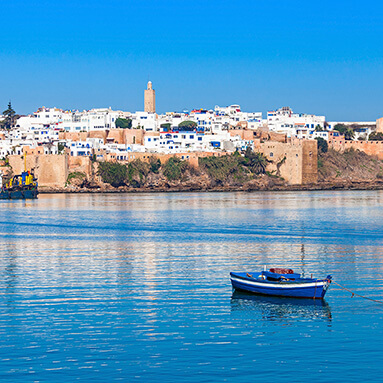
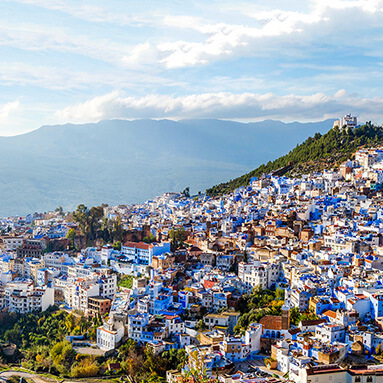
The Berbers have occupied Morocco since the second millennium BCE. The Roman empire occupied Morocco in 46 CE, and Arabs occupied the area circa 685 CE, when they brought Islam with them. The Berbers joined the Arabs in conquering Spain in 711 CE but were evicted from there in the 13th century after occupying a large area in Moorish Spain.
At this time, the land was split into small tribal empires. Disputes between Berbers and Arabs were persistent. The Alawite Dynasty took control of Morocco in 1660. This dynasty is said to be descended from the prophet Muhammad and rules to this day.
Several of Morocco's historic landmarks are UNESCO World Heritage sites. These include Volubilis, which was the capital of the Roman province of Mauritania in the third century BCE. Today, you can tour the ruins of the ancient city, which was abandoned around the 11th century.
Mazagan, on the southwest coast of Casablanca, tells some of the history of Portuguese colonisation. The original settlement dates to the 1500s, and although the city was taken over by the Moroccans in 1769, many Portuguese-style buildings still exist.
Some of Morocco's many attractions include:
The Medinas at Essaouira, Fez, Marrakesh, and Tétouan are all UNESCO World Heritage sites which offer a chance to explore Moroccan culture. When you travel to Marrakesh, visit the Djemaa el Fna, an open square in the city centre. Here you will see performers, acrobats, and musicians showcasing their art. In the Medina of Fez, the palaces, mosques, and housing are crammed together, separated by complex narrow alleyways. You will also find the city's souk, or market, which extends over more than a kilometre; it is packed with every sort of handicraft for sale.
If you're up for the challenge, take part in one of the organised hikes around Azilal in the Atlas Mountains to view spectacular valleys and gorges. If you are a bird watcher, head for the area around Chefchaouen in northeast Morocco, where the Parc National de Talassemtane is home to numerous native species, including the Pharaoh eagle-owl, Levaillant's woodpecker, and the Barbary partridge.
The Marrakesh Medina is a popular tourist attraction. Marrakesh was founded circa 1070 and is home to an impressive number of architectural gems and art. Here you will find monumental gates, the Koutoubia Mosque, Saâdians tombs, ruins of the Badiâ Palace, Bahia Palace, and the Ménara gardens and pavilion. If you're into exotic adventures, you'll love getting lost in Morocco's famous medinas or old city quarters. These resemble a walled maze full of narrow alleyways, hidden courtyards, palaces, and mosques.
Fez is another major cultural destination. The back alleys in Fes el Bali have old paintwork and gorgeous old doors, but be careful – you may get lost in its complex maze!
Volubilis, Morocco's main Roman ruin, is great for history enthusiasts. This site is also full of fallen columns and temple remnants, standing as reminders of the great empires that once occupied the area. The ruins are located on a hilltop, providing a spectacular view of the surrounding countryside.
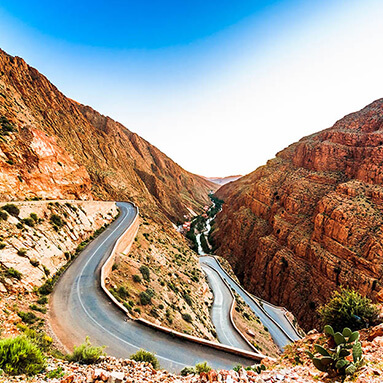
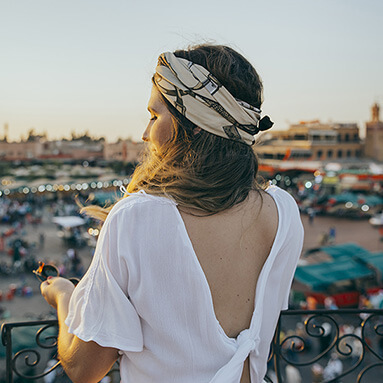
It is easy to find a place to stay in Morocco. You might find yourself spending one night in a kasbah in the breath-taking Atlas Mountains, or enjoy star-gazing by camping on the dunes of the Sahara Desert, or sleeping among fountains and mosaics in a traditional riad in the Marrakesh Medina.
It's almost impossible to travel to Morocco without staying in a riad. These are traditional guesthouses, many of them are older buildings that have been restored and offer the type of charm and ambiance you probably won't find in a hotel.
Most of the modern Moroccan hotels are in the newer parts of major cities outside the medina walls. These hotels are perfect for those seeking conveniences such as air conditioning, elevators, Wi-Fi, and fitness centres.
Apart from city hotels, Morocco also has beach resorts along the coast, and the isolated mountains and deserts offer one-of-a-kind lodgings. In these areas, you will find retreats that are popular with travellers seeking immaculate scenery and a base for hiking to Berber villages.
Pitched tents on sand dunes provide a station for a wide range of activities such as horse or camel riding, or even learning how to surf in the Atlantic. Ciel d'Afrique hosts hot-air balloon flights that take off at sunrise over Marrakesh and surrounding areas. On these flights, you will enjoy great views of the Atlas Mountains, olive groves, date oases, deep valley gorges, and remote Berber villages.
In a country with four different mountain ranges – the Rif, Middle Atlas, High Atlas, and Anti-Atlas –you will want to go hiking. The beautiful, rocky Atlas Mountains stretch over 2,400 km from the West Coast of Morocco all the way to Tunisia. Here, you can hike all year round, but the best time is between April and May.
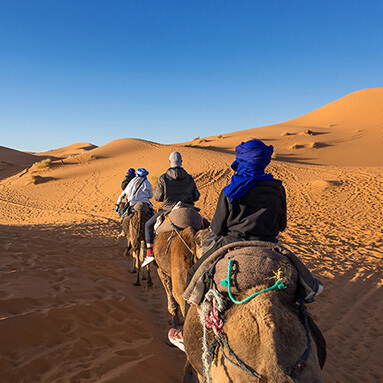
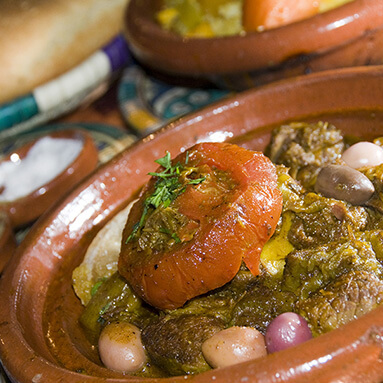
Traditional Moroccan food is a mixture of Berber, Arabic, Turkish, Middle Eastern, and French cuisine. If you want to learn how to cook a traditional Moroccan dish, riads offer great cooking classes and fresh produce is readily available at the local market. Do not miss the chance to try street food in Morocco, which includes breakfast sweets, sandwiches, soups, grilled meats, fried fish, and hearty main dishes like stewed lentils and rotisserie chicken. The best cities for street food are Fez, Marrakesh and Essaouira. Any local will tell you that the best food is found in homes and not in restaurants. Unless you can score an invite to a local's home, you stand a better chance of an authentic meal if you visit the maze-like medinas and head to the food souks.
Generally, Morocco's coastal climate is moderate and subtropical. Breezes from the Atlantic Ocean and Mediterranean Sea give the country cool and comfortable weather. Temperatures in the interior are more extreme; winters are numbing and summers are scorching, so spring and autumn are pleasant times to visit. At these times, it is generally warm and dry, and the landscape is green and lush, making for spectacular mountain hiking.
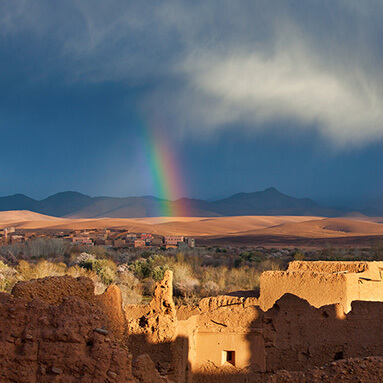
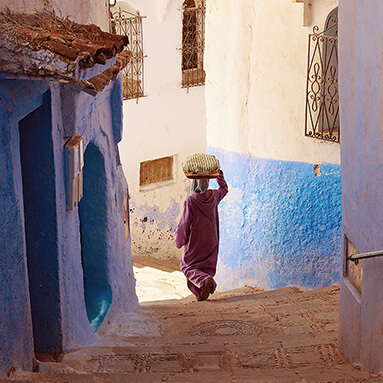
In general, Morocco is a safe country. Moroccans are a hospitable and tolerant people which make travelling through the country an enjoyable experience. However, get travel insurance for Morocco so you can travel stress-free.
While crime does not pose a noteworthy threat, foreigners are targeted more often if they appear to be rich. In popular tourist areas, visitors are advised to guard their possessions carefully. The most common crimes tend to be those of opportunity, such as pickpocketing, robbery, purse snatching, and harassment of women.
You should always be attentive and watch out for fake tour guides. There are some helpful ways to spot these, as they tend to use similar tricks. Some will ask you for help to translate something into English and, during the conversation, lead you to a shop. Once inside, vendors may offer you a gift. You must not accept this, as three or four people may be waiting to approach you, accuse you of stealing, and extort a high price for the item from you.
Most international visitors enter Morocco by air. There are several international gateways, namely in Agadir, Casablanca, Marrakesh, and Tangier. The busiest airports are the Mohammed V International Airport in Casablanca, which handles Morocco's long-distance flights, and the Marrakesh Menara Airport.
South African passport holders need to obtain a visa before they visit. It generally takes anywhere from two days to 15 days to process a visa, which is done at the Morocco Embassy or Consulate. Travellers are required to provide proof of return travel and funds to cover them for the duration of their visit. The total flight duration from Johannesburg to Casablanca is 10 hours. Morocco is one hour behind South Africa in our winter and two hours behind in our summer.
Drivers in Morocco are known to be erratic. All kinds of vehicles, from bicycles to donkey carts, are legally allowed to share the road. Traffic accidents are a major concern, so it is advisable to be careful when you're at the wheel. Trains are the best mode of transport if you just want to go city-hopping, while taxis are ideal for everything else.
If your journey to Morocco starts in Europe, you may want to consider travelling by sea. With routes starting in Spain, France, and Italy, most ferries take you to the Moroccan port city of Tangier.
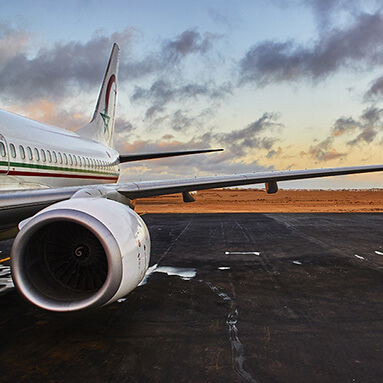
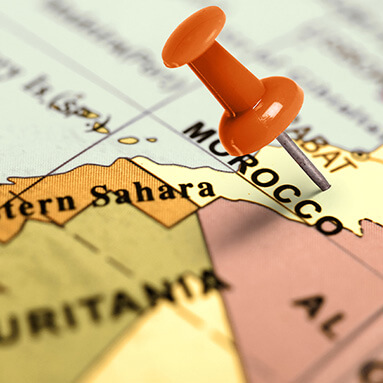
Information provided for informational purposes. Prices quoted correct as at time of publishing this article
Sources: Wikipedia, Lonely Plant, Trip Advisor, Wiki Travel